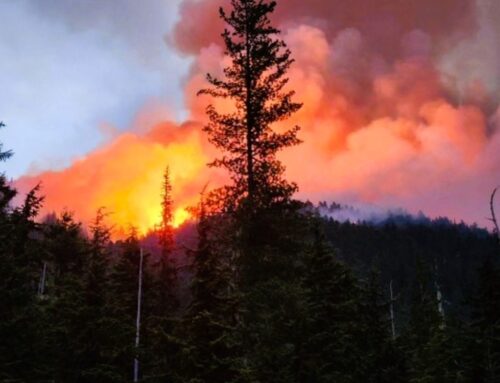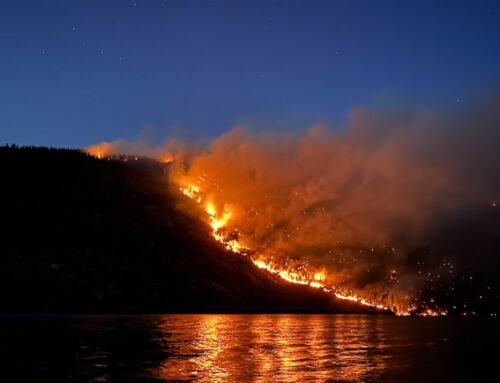Fungus causing white-nose syndrome has been detected in Chelan County
information released, USDA Forest Service photo of Boulder Cave entrance
The Washington Department of Fish and Wildlife (WFDW) recently confirmed the presence of the fungus responsible for causing white-nose syndrome, an often-fatal disease of hibernating bats, at Boulder Cave on the Okanogan-Wenatchee National Forest in central Washington.
WDFW and U.S. Forest Service biologists sampled bats at Boulder Cave in January, and the U.S. Geological Survey’s National Wildlife Health Center confirmed a positive test for the fungus Pseudogymnoascus destructans, or Pd, this month.
“A sample collected from a silver-haired bat at Boulder Cave has tested positive for the fungus that causes white-nose syndrome,” said Abby Tobin, bat biologist with WDFW. “Last year, samples tested inconclusive, but now we have confirmation that the fungus is present at Boulder Cave.”
Boulder Cave is a popular recreation site on the Okanogan-Wenatchee National Forest and is scheduled to open for seasonal recreation this week. The U.S. Forest Service previously gated off the location in Boulder Cave where most of the bats hibernate to protect them.
“The information provided in the test results will inform additional management actions. We are working with specialists to strengthen existing prevention measures and increase visitor education on limiting spread of the fungus,” said USFS Acting District Ranger Jason Emhoff. “Boulder Cave is unique in that it requires no equipment or technical expertise to explore, making it a popular location for families and casual visitors.”
Boulder Cave visitors and others spending time outdoors can do their part to limit the spread of Pd.
“Even though the fungus is primarily spread through contact between bats, humans can unintentionally spread it as well,” said Tobin. “People can carry fungal spores on clothing, shoes, or recreation equipment that touches the fungus.”
To get the most up-to-date decontamination protocols and guidance on limiting the spread of white-nose syndrome, visit whitenosesyndrome.org.
WDFW urges people to not handle wild animals, especially if they appear sick or are found dead. If you find sick or dead bats or notice bats acting strangely, please report your sighting on the WDFW website or call 360-902-2515.
Pseudogymnoascus destructans, the fungus that causes white-nose syndrome, attacks the skin of hibernating bats and damages their delicate wings, making it difficult for them to fly. Infected bats often leave hibernation too early, which causes them to deplete their fat reserves and become dehydrated or starve to death. White-nose syndrome has caused vulnerable bat populations to decline in many parts of North America. While the syndrome
is often fatal to bats, it does not affect humans, livestock, or other wildlife.
The fungus that causes white-nose syndrome has been detected in Benton, Chelan, Jefferson, King, Kittitas, Lewis, Mason, Pierce, Snohomish, Thurston, and Yakima counties. A map showing fungus and white-nose syndrome detections in Washington is available online at wdfw.wa.gov/bats.
Washington is home to 15 bat species that play an important role in their native ecosystems. WDFW partners with numerous state, federal, tribal, and
non-government organizations to proactively survey Washington bat populations for white-nose syndrome and test emerging preventative treatments. For more information about Washington bats, visit WDFW’s Living with Bats webpage. .
For information about recreating at Boulder Cave or elsewhere on the Okanogan-Wenatchee National Forest, visit the Forest Service website. .
Request this information in an alternative format or language at wdfw.wa.gov/accessibility/requests-accommodation, 833-885-1012, TTY (711), or CivilRightsTeam@dfw.wa.gov.








